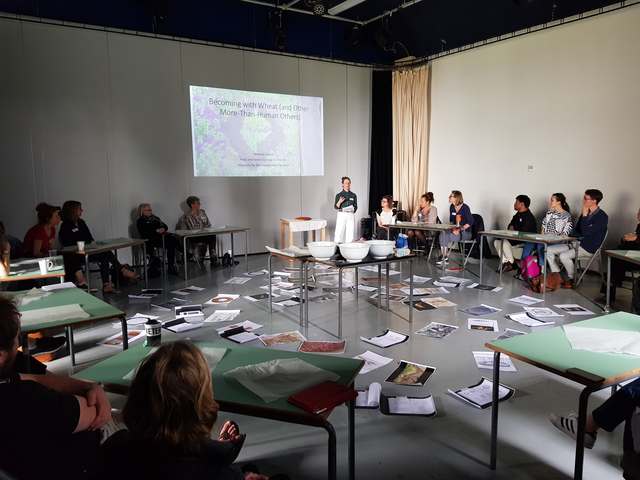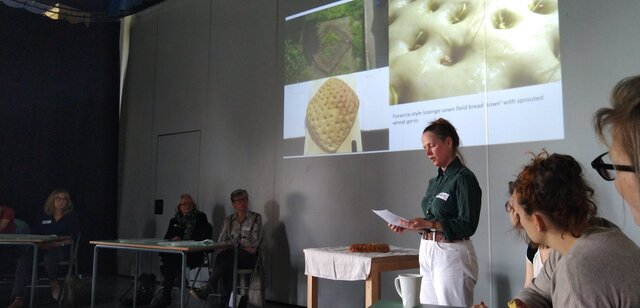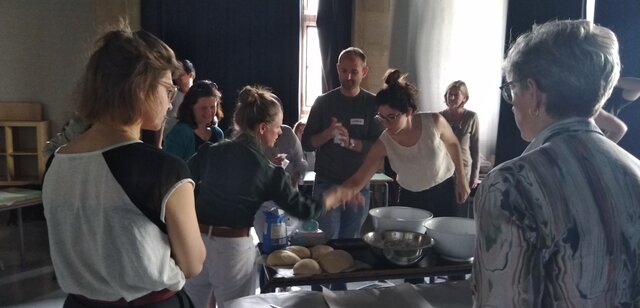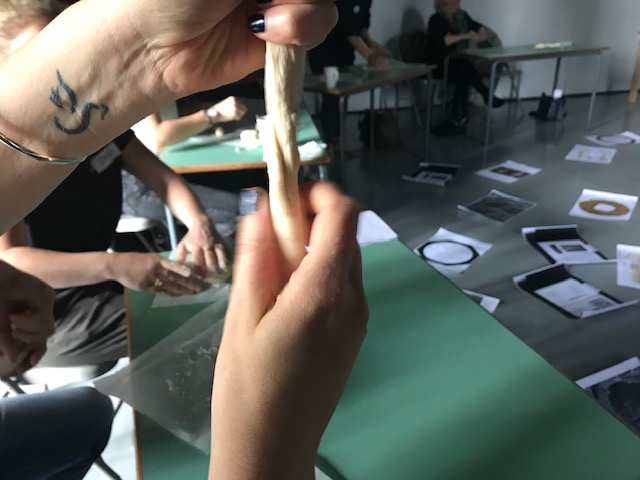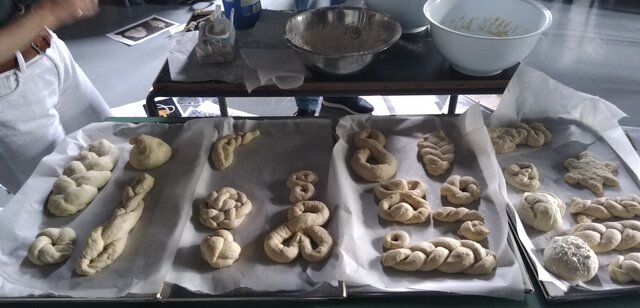At a workshop at the Making SPAce: Sociology, Philosophy and Anthropology student post-graduate research conference at the University of Exeter, I shared my ongoing project, ‘Becoming with Wheat (and Other More-Than-Human Others)’ which explores our companioning with wheat as well as the other human and more-than-human entities that are entangled within this relationship.
In the session, I read a short paper contextualising the project and where I shared some of the outcomes and materials experiments from the ongoing cultivation, observation, filming, photographing, anthotype making, etching, wheat weaving, performance, writing, cooking and eating of wheat. We then enacted, experienced and materially investigated some of the theoretical ideas discussed through a bread making activity where participants kneaded and shaped the dough to make breads which talked of their entangled relationship with wheat. I also shared a loaf of bread made especially for the occasion, my Focaccia-style lozenge-sown field bread 'sown' with sprouted wheat germ which we ingested to collapse the boundaries between us, the thresholds between land, food, and the body, via the digestive system.
Drawing on the emerging arena of multispecies ethnography, where notions of our relational and entangled relationships with non-human others is unfolding the grip of anthropocentrism, I refer to Donna Haraway’s notion of ‘companions species’. Wheat has been our companion species since our ancestors in the Near East domesticated grass-derived crops the oldest cereals, about 10-12,000 years ago. Anna Tsing calls it a ‘love affair […] one of the great romances of human history [where] people transferred their affection from multi-species landscapes to shower intimacy upon one or two particular crops’ (Tsing, 2012: 145).
At the intimate romantic dinner or on the kitchen table around the world, wheat is often present. And ‘whether we know how to eat well or not’, Haraway reminds us, ‘human and nonhuman animals are companion species, messmates at table, eating together’ (Haraway, 2008: 301). In ‘Becoming with Wheat…’, I propose that we extend to and embrace the more-than-human vegetal of wheat, especially since companioning is bound up in the root of the word ‘companion’, from the Latin, cum panis, meaning, ‘with bread’ (Haraway, 2016: 11).
References:
Haraway, Donna (2008) When Species Meet. Minneapolis: University of Minnesota Press.
Haraway, Donna (2016) Staying with the Trouble: Making Kin in the Chthulucene. Durham: Duke University Press.
Tsing, Anna (2012) ‘Unruly Edges: Mushrooms as Companion Species for Donna Haraway’ Environmental Humanities (1) pp. 141-154 https://doi.org/10.1215/22011919-3610012

